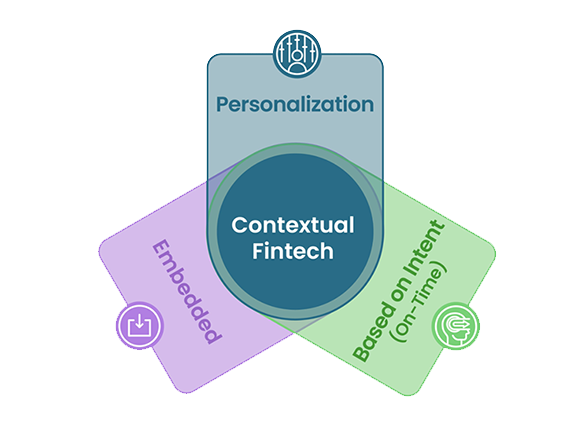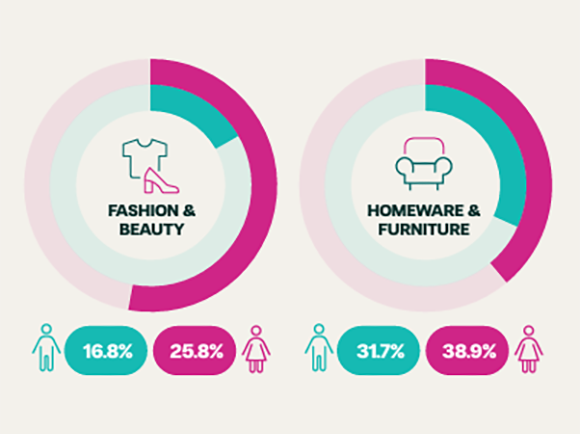Buy Now, Pay Later and Clothes: What Merchants Need To Know

The art of Buying Now, Paying Later has been around since the dawn of time. But the industry really made a name for itself during the COVID-19 pandemic.
There we were, locked indoors, with nothing to do but shop online for comfy clothes, when suddenly we met with a popular new way to pay: retail finance, or as it’s commonly known, Buy Now, Pay Later (BNPL).
Many would argue that the modern-day Buy Now, Pay Later came to the fore when clothing and shoe retailers started to offer short-term, interest-free loans to help customers with their shopping. This also led to some controversy, since these loans seemed to be marketed more towards young people with an interest in fast fashion.
The rise of Buy Now, Pay Later for clothes and shoes led directly to the government stepping in to regulate the sector. Indeed, the 2021 Woolard Review called attention to the fact 90% of BNPL purchases involved fashion and footwear.
Still, Buy Now, Pay Later and retail finance remain popular with clothing, fashion and footwear retailers and their customers. So, if you’re a merchant looking to get involved in this sector, what do you need to know? Let’s start by asking… what is retail finance?
What is retail finance?
When we talk about Buy Now, Pay Later in all its many iterations, we’re actually talking about retail finance. This is a long-established industry, in which lenders offer money to customers to help them pay for their shopping. You probably know it best from retail sectors such as furniture and electronics, but it’s quickly spreading to other verticals too.
The term encompasses many different types of finance, all of which allow consumers to delay and/or spread the cost of their purchase. Some of the most popular types out there include:
Buy Now, Pay Later
The poster-child of retail finance is the ultra-popular Buy Now, Pay Later (BNPL), which is often used as a short-hand to describe the retail finance industry as a whole.
But it’s important to remember the old saying (that we coined): all Buy Now, Pay Later is retail finance, but not all retail finance is Buy Now, Pay Later.
BNPL is custom-built for the fast-moving consumer goods sector. It’s a quick and easy way to get a small loan to pay for small and mid-sized purchases. It usually comes with a credit limit of £250, which must be repaid within 3–4 months. Because the loan is short-term, it’s usually always offered with 0% finance (but that may not be the case forever). And, because customers aren’t borrowing vast sums of money, BNPL can usually be completed with only a soft credit search. Some BNPL providers even allow customers to buy without paying a deposit.
Short-term Interest-free Credit (STIFC)
The big sister of BNPL, Short-term Interest-free Credit works in much the same way, except it has a far higher maximum loan value. Some STIFC loans can be as high as £25,000. This makes it the perfect variety of retail finance to serve retail sectors with big-ticket items, such as furniture, electronics, travel, leisure, vehicles and – of course – high-end luxury retail.
Because of the higher loan values, Short-term Interest-free Credit providers usually run a hard credit search on their borrowers, and are much more likely to ask for a deposit. The “short term” aspect of the loan depends on the lender’s criteria – but for an interest-free loan, customers can usually expect to see repayment windows of up to two years. Any longer than that, and they’ll be looking at…
Interest-bearing credit
Think STIFC, without the IF. For high-value loans with repayment periods of three years or more, lenders will usually start charging APR on the loan. Because the lender makes a profit on this type of loan, the merchant may benefit from lower fees.
Pay in 30
Less of a loan, more of an agreement, Pay in 30 gives the customer up to a 30-day grace period before they have to pay for their item(s). It’s usual to ask the customer for a deposit, and the maximum ‘loan’ value is typically around £4,000.
Where can customers shop for clothes and shoes with Buy Now, Pay Later and retail finance?
Everywhere. No, seriously. In our own research, we found that 76% of large retailers in the UK offered Buy Now, Pay Later, with 27% offering more than one retail finance solution. The vast majority of these were clothes and shoe stores.
And that research was purely online – step onto the UK high street, and you’ll see many big-name clothes shops offering Buy Now, Pay Later at the till, too.
Just as well, since it seems BNPL is becoming many shoppers’ preferred way to pay. In 2022 alone, over 17 million British customers used Buy Now, Pay Later.
Having said that, our research also found that many of the top-end clothes and shoes retailers erred away from Buy Now, Pay Later. Designer brands were less likely to offer payments in instalments, ostensibly because the ‘accessibility’ of their items did not factor into the equation. In other words, BNPL disrupted the sense of premium attached to their items. Ironically, it is actually older, wealthier customers who are among the fastest-growing users of BNPL and retail finance.
Another reason may be that these brands want to preserve their high-value image, and do not wish to associate themselves with brands who tend to market to the lower end of the market. These brands could instead benefit from implementing their own white labelled retail finance journey, allowing them to work with reputable lenders while maintaining the retail finance journey under their own brand name.
We also noticed that many smaller, independent retailers were less likely to offer retail finance options. Little wonder: the up-front installation costs, monthly subscription fees and 2–8% average commission per transaction charged by the lender no doubt seem scary to merchants already operating on shoestring budgets.
In summary, you will find BNPL and retail finance at a wide variety of clothes merchants’ checkouts, but you are perhaps less likely to find it at the smallest, and the most high-end checkouts.
Is it possible to use Buy Now, Pay Later for clothes and shoes with no credit check or deposit?
Short answer: yes.
Long answer: yes, but it will depend on three factors. The type of finance being offered, the shape of regulatory compliance, and the lender’s appetite to risk.
Let’s start with the first one. Buy Now, Pay Later providers (those offering credit below £250) have a reputation for a fast-and-loose approach to credit worthiness checks. It’s why the Buy Now, Pay Later sector has come under heavy fire, with one study claiming 17% of BNPL customers met the criteria for being in severe financial difficulty. However, while some Buy Now, Pay Later providers allow customers to buy clothes and shoes with no deposit and a very soft credit check, most have tightened their policies in recent months to adapt to upcoming regulation. Speaking of which…
Buy Now, Pay Later regulation is scheduled to impact the UK market in mid-2023. The exact shape of this regulation is yet to be determined, but it is likely it will impose new rules around credit checking and credit reporting. This means that, by the end of the year, it is unlikely customers will have the option Buy Now, Pay Later with no credit check. Deposits, however, will remain a different story. Which brings us to the final point…
A Buy Now, Pay Later deposit is a way for the lender to reduce the risk of lending. Borrowers who are able to afford a deposit are considered less likely to default on their loan, which is why the majority of Buy Now, Pay Later providers ask borrowers to pay an up-front deposit. It also has a benefit for the customer too, by reducing the total amount they are borrowing. There are still some providers who may be happy to offer the option Buy Now, Pay Later with no deposit.
Should I implement retail finance (Buy Now, Pay Later) for my clothes store?
Now seems to be the perfect time to do just that. The headwinds suggest that retail finance will soon be the future of payments, with the sector expected to more than quadruple in size by 2029.
This makes now the perfect time to implement a retail finance solution for your business. Different solutions suit different type of businesses, but whether you choose low-value Buy Now, Pay Later or high-value retail finance, the benefits for your store will be widely consistent:
Bag more customers
Buy Now, Pay Later and retail finance is attracting more and more customers every year. Right now, there are around 360 million BNPL shoppers, and that number is expected to surpass 900 million by 2027. The growth is mainly driven by young shoppers, who seem to overwhelmingly prefer BNPL to credit cards.
The opportunity is evident. But it’s much more than winning new customers – BNPL helps you avoid losing customers, too. Finder reported in 2021 that 9.5 million Brits said they would be inclined to shop elsewhere if their retailer did not offer retail finance at the checkout.
Get an edge over the competition
While many clothing and footwear retailers have already implemented at least one checkout finance option, there are still many retailers who stubbornly refuse to adopt this popular payment option. Don’t be one of these businesses – instead, seize the opportunity to get a head-start on them. You might even start to win customers away from your competitors.
And if your competitors have implemented retail finance? There’s still room to win. Scan their lending options to look for their payment terms and interest rates. Do they limit repayment windows to three months? Do they have an upper borrowing limit? Do they charge interest on credit? Each of these factors offers your business an opportunity to offer more favourable terms, in an attempt to win appeal from your competitors’ customers.
Sell more, more, more
This one is fairly straightforward. Adding retail finance to your payment repertoire can incentivise customers to spend more. Exact figures vary between verticals and depending on the type of finance offered, but many merchants can expect to see average order values increase by as much as 50%. It’s this increase in conversions that means implementing BNPL more than pays for itself.
Fewer basket abandonments
Retail finance also helps to stop customers from abandoning their carts. A customer who makes it to the checkout is around 20–30% more likely to convert if they see the option to Buy Now, Pay Later.
So, there are a wide range of benefits to implementing retail finance or Buy Now, Pay Later for your clothes and shoe store. But that’s not to say it’s all bells and whistles. There are certainly some pitfalls to checkout finance, with the main ones being:
The F-word
Fees.
Yes, implementing checkout finance comes at a price, and merchants must be mindful of these costs. As well as an initial set-up fee, the merchant may be expected to pay a monthly subscription fee to their retail finance or Buy Now, Pay Later provider. Furthermore, they will be expected to pay around 2–8% commission to the lender for every sale. This can mean that an underperforming Buy Now, Pay Later provider may end up costing the merchant more than they make in increased conversions.
PR crises
The media has found a whipping boy in the form of Buy Now, Pay Later. Seeing it first-and-foremost as a form of debt, journalists are quick to criticise brands who launch their own retail finance propositions. As such, while launching your own retail finance offering, you may find yourself under fire from the newspapers. Bear in mind, this only happens rarely – but it’s still best to be prepared in case it ever happens.
Refunds
Refunds can be a major stumbling block for both retailers and lenders. Since your customers owe money to a third-party, they are often obliged to continue making repayments until the dispute is resolved with you, the merchant. In some cases, customers will stop making repayments, which could lead to them being penalised. It’s up to you, the merchant, to communicate clearly with both the customer and the lender about what to do in the event of a refund, and offer help as necessary.
Launching your own checkout finance programme in 2023?
Buy Now, Pay Later made a name for itself with clothes and shoes, but the industry has grown in leaps and bounds since then. If you are thinking of launching your own retail finance programme this year, you may be left wondering which solution is right for you and your business. Should you go for one of the many Buy Now, Pay Later providers on the market? Or would you benefit more from choosing a white labelled retail finance platform, allowing you to access a wide range of Tier One lenders while maintaining control over your checkout journey?
With Divido, your brand can start lending through our trusted lenders with maximum loan values up to £25,000. Luxury and high-end retailers can also benefit by keeping the finance journey under their own brand name, increasing customer loyalty while making the journey feel distinctly yours. Why not speak to us today to see how your brand can make a start in the wonderful world of checkout finance?
You might also
be interested in
Keen to know more?








